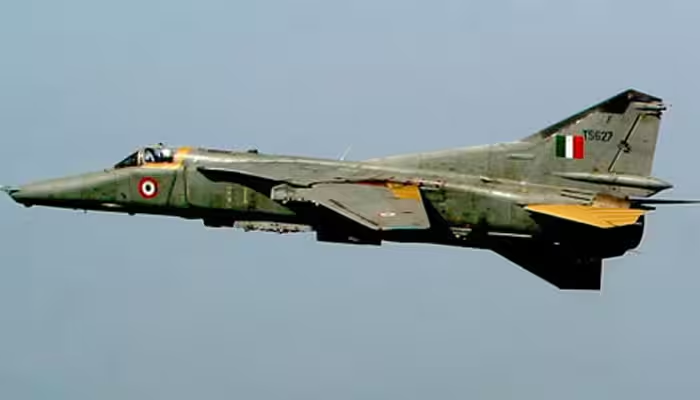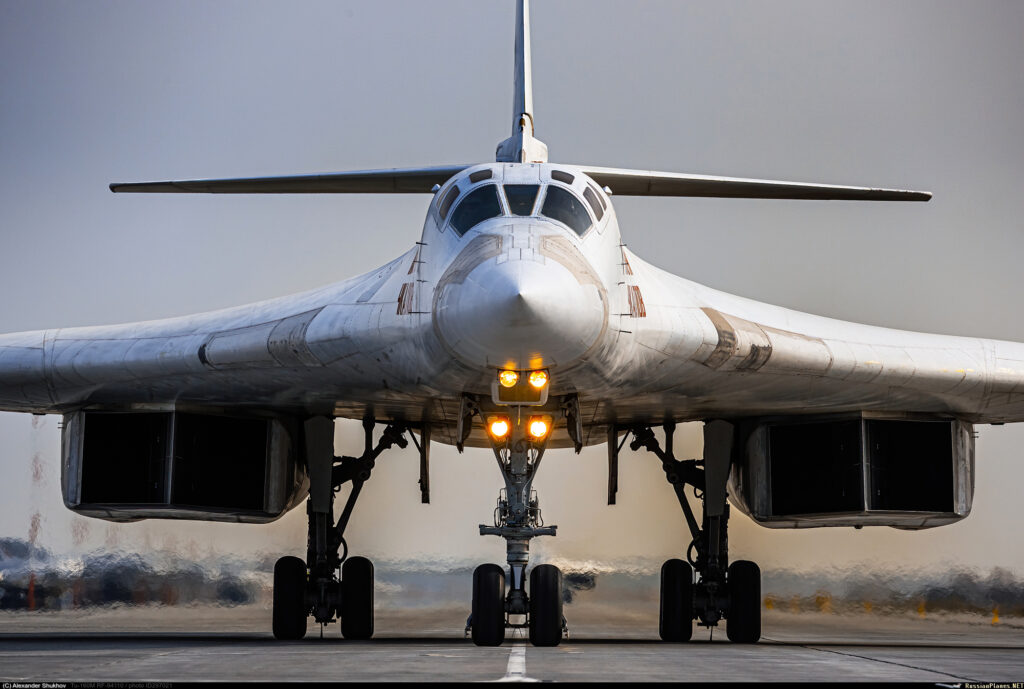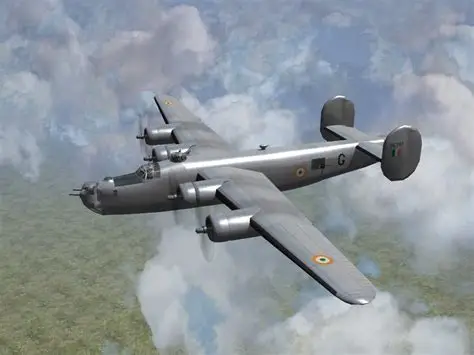Group Capt MJ Augustine Vinod (r)

In the blistering dawn of May 2025, as Operation Sindoor unfolded across the volatile Indo-Pak border, the Indian Air Force (IAF) scripted a chapter of audacious precision strikes deep into enemy territory. Air Chief Marshal AP Singh, in a riveting briefing on October 3, 2025—mere days before the IAF’s 93rd Air Force Day—revealed how Indian forces decimated Pakistani fighter jets, including F-16s caught vulnerable on the ground during maintenance, alongside high-tech JF-17s in aerial dogfights. Radars, command-and-control centers, runways, and hangars crumbled under the onslaught, with a landmark “longest kill” extending 300+ kilometers inside Pakistan, courtesy of long-range surface-to-air missiles that pierced the adversary’s defenses like a scalpel. This wasn’t just a tactical triumph; it was a testament to India’s evolving military prowess. Yet, beneath the euphoria lies a glaring void: the absence of a dedicated strategic bomber in the IAF’s arsenal. Imagine if those strikes could have been amplified by long-endurance platforms capable of traversing from Srinagar to Trivandrum without refueling, unleashing sustained barrages over vast oceanic expanses. As President Donald Trump’s administration cozies up to Pakistan—brokering tariff deals, a Cryptocurrency Startup, mining rare earth elements, and praising its army chief—while China looms large in the Indian Ocean Region (IOR), India’s strategic calculus demands a revival. The Canberra, once the IAF’s workhorse, flew such missions effortlessly; its phasing out left a chasm that Operation Sindoor’s success only underscores as urgent to fill. In an era of hybrid threats and power projection, a strategic bomber isn’t a luxury—it’s the linchpin for India’s ascent as a regional hegemon.
The Historical Tapestry: From Liberators to Canberras – India’s Bomber Legacy
India’s tryst with strategic bombers predates independence, rooted in the colonial era’s exigencies and evolving through post-1947 conflicts. During World War II, the British Royal Indian Air Force (RIAF) operated American Consolidated B-24 Liberator heavy bombers, inherited from Allied forces. These four-engine behemoths, with a range exceeding 3,000 kilometers, were pivotal in maritime patrols and anti-submarine warfare in the Indian Ocean. Post-independence in 1947, the IAF retained three squadrons of these aircraft until 1968, using them for reconnaissance and bombing roles in early border skirmishes. They symbolized India’s nascent aerial might, capable of long-haul missions that deterred adventurism from neighbors.
The true dawn of jet-age strategic bombing arrived in 1957 with the induction of the British-designed English Electric Canberra B(I).58. This twin-engine, high-altitude medium bomber entered IAF service as the first jet bomber, marking a leap from propeller-driven relics. No. 5 Squadron became the pioneer, transitioning fully by 1959, followed by Nos. 16 and 35 Squadrons. Canberra’s versatility was unmatched: it served as a bomber, reconnaissance platform, and even an electronic warfare asset. Its Rolls-Royce Avon engines propelled it to 570 mph at 50,000 feet, with a combat radius allowing nonstop flights from northern frontiers to the southern tip, precisely the Srinagar-to-Trivandrum endurance referenced.
Canberra’s mettle was forged in fire during the 1965 Indo-Pakistani War. In the audacious “Raid on Badin,” IAF Canberras struck deep into Pakistani territory, targeting radar installations and airfields, disrupting enemy operations and earning accolades for precision amid intense anti-aircraft fire. No. 5 Squadron, the first to fly the type, had already tasted combat in the Congo Crisis, boasting Vir Chakra recipients. The 1971 War elevated its legend: Canberras conducted night raids on East Pakistan (now Bangladesh), bombing key bridges, fuel dumps, and troop concentrations, contributing to the swift capitulation of Pakistani forces. Over 50 years of service—from 1957 to 2007—the Canberra flew in multiple roles, including target towing and pathfinding, amassing over 100,000 flying hours. It was phased out amid modernization drives, with the last squadron decommissioning in 2007, leaving the IAF without a dedicated strategic bomber.
This void wasn’t due to a lack of offers. In 1971, the Soviet Union proposed Tupolev Tu-22 supersonic bombers, even painting them in IAF colors, but India declined, prioritizing fighter-bombers like the MiG-27. The rationale? India’s threats were regional—Pakistan and nascent border tensions with China—amenable to tactical assets rather than intercontinental behemoths—multi-role fighters like Su-30MKI and Rafales, armed with BrahMos missiles, filled interim gaps for precision strikes. Yet as global dynamics shifted, the absence of a true strategic platform—capable of loitering over the IOR for hours and delivering massive payloads without forward basing—became a strategic Achilles’ heel.
Operation Sindoor: A Spotlight on Capabilities & Gaps
Fast-forward to 2025: Operation Sindoor, a four-day campaign in May, exemplified IAF’s operational synergy but exposed limitations in sustained power projection. Air Chief Marshal AP Singh’s briefing detailed how integrated air defenses and long-range strikes neutralized Pakistan’s air power: destroying JF-17s mid-air, F-16s on tarmacs, and infrastructure like hangars and runways. The “turning point” was a 300km deep strike, showcasing beyond-visual-range capabilities. Pakistan’s narrative of minimal damage was dismissed as “Manohar Kahaniyan” (fairy tales), while India achieved its objectives swiftly through tri-service coordination.
However, prolonged engagements without dedicated bombers, especially in the IOR, were deeply felt. Fighters excel in quick sorties but fatigue in extended ops; bombers provide endurance for follow-on strikes, reconnaissance, and the destruction/ suppression of enemy air defenses (DEAD / SEAD). ACM emphasized self-reliance post-Sindoor, hinting at filling “critical gaps” with strategic tech. Videos from Air Force Day preparations underscore humanitarian and combat roles, but the briefing’s focus on “next war” scenarios potentially involving China amplifies the bomber imperative.

Geopolitical Turbulences: Trump’s Pakistan Pivot and IOR Imperatives
The sands of geopolitics shift perilously. President Trump’s second term has seen a puzzling thaw in relations with Pakistan, from “pariah” to “partner.” In September 2025, Trump hosted PM Shehbaz Sharif, praising Army Chief Asim Munir as a “very great guy” and brokering deals for lower US tariffs in exchange for investments in Pakistani agriculture, tech, mining, and energy. This follows Trump’s claimed mediation in the India-Pakistan conflict, denied by New Delhi, straining Indo-US ties ironically amid Pakistan’s China tilt. India watches warily as US-Pak relations rebound, potentially emboldening Islamabad post-Sindoor setbacks.
Compounding this is China’s assertiveness in the IOR, where its H-6 bombers patrol aggressively. India requires dominance here to secure sea lanes, counter submarine threats, and project power to island territories like the Andamans. Strategic bombers would enable rapid response to contingencies in the Malacca Strait or the Arabian Sea, integrating with carriers like INS Vikrant to support anti-access/area-denial (A2/AD) strategies. Without them, reliance on vulnerable tankers or forward bases exposes logistics to disruption.
The Imperative: Bridging the Strategic Void
India’s doctrine emphasizes credible minimum deterrence, but the air leg of its nuclear triad remains underdeveloped sans bombers. Tactical assets like Su-30s with nuclear gravity bombs suffice regionally, but strategic bombers offer flexibility for conventional/nuclear roles, standoff munitions, and ISR (intelligence, surveillance, reconnaissance). The hot, humid climate challenges high-thrust bombers, but advancements in engines mitigate this challenge.
Options abound: Russia’s Tu-160M “White Swan,” pitched for demos at Aero India, boasts a 12,000km range and massive payloads, and is integrable with BrahMos. Leasing 6-8 could bridge gaps at a lower cost than a single Rafale squadron, while indigenous efforts like the debunked ULRA (12,000km stealth bomber) signal intent, though officials deny active projects. Online discussions advocate 20 Tu-160s for deterrence, each carrying 10 BrahMos or Agni-P missiles.
Critics argue India doesn’t “invade,” favoring missiles/drones. Yet, bombers deter by existence, enabling non-invasive power projection. However, the mere inclusion of a strategic bomber would greatly enhance India’s national power.
Elevating India’s Regional Standing and National Power
A strategic bomber fleet would catapult India’s stature. In the IOR, it counters China’s H-6, secures SLOCs, and deters encirclement. Against Pakistan, post-Sindoor, it ensures escalation dominance, signaling unmatchable reach amid US overtures. Nationally, it completes the triad, bolstering deterrence and soft power, projecting India as a responsible great power, akin to US B-52s or Russian Tu-95s.

Economically, indigenous development spurs tech transfer, jobs, and exports, enhancing comprehensive national power. Diplomatically, it shifts perceptions from defensive to assertive, fostering alliances such as the Quad to promote IOR stability. Experts envision 120 stealth bombers by 2040 for global roles.
Conclusion: Time to Soar Again
Canberra’s echo demands resurrection. As ceasefire violations persist and Trump’s Pak pivot unfolds, India’s IOR ambitions hinge on strategic bombers. Operation Sindoor has been resolved; bombers will ensure dominance. Prioritizing this via Russia, indigenous paths, or hybrids will not only fill historical voids but also forge India’s destiny as an unassailable power. The skies await their guardian.
Group Captain MJ Augustine Vinod (r) is a Flying Instructor & a graduate of the College of Air Warfare, where he did his Higher Air Command Course. He has been commended by the Air Officer Commanding in Chief twice and was conferred with the Vishisht Seva Medal by the President of India in 2015. He is a trained Paratrooper, Sky Diver, Scuba Dive Master and Deep-sea Rescue Diver. He is a renowned columnist and regularly gives his excerpts to various dailies and magazines.


